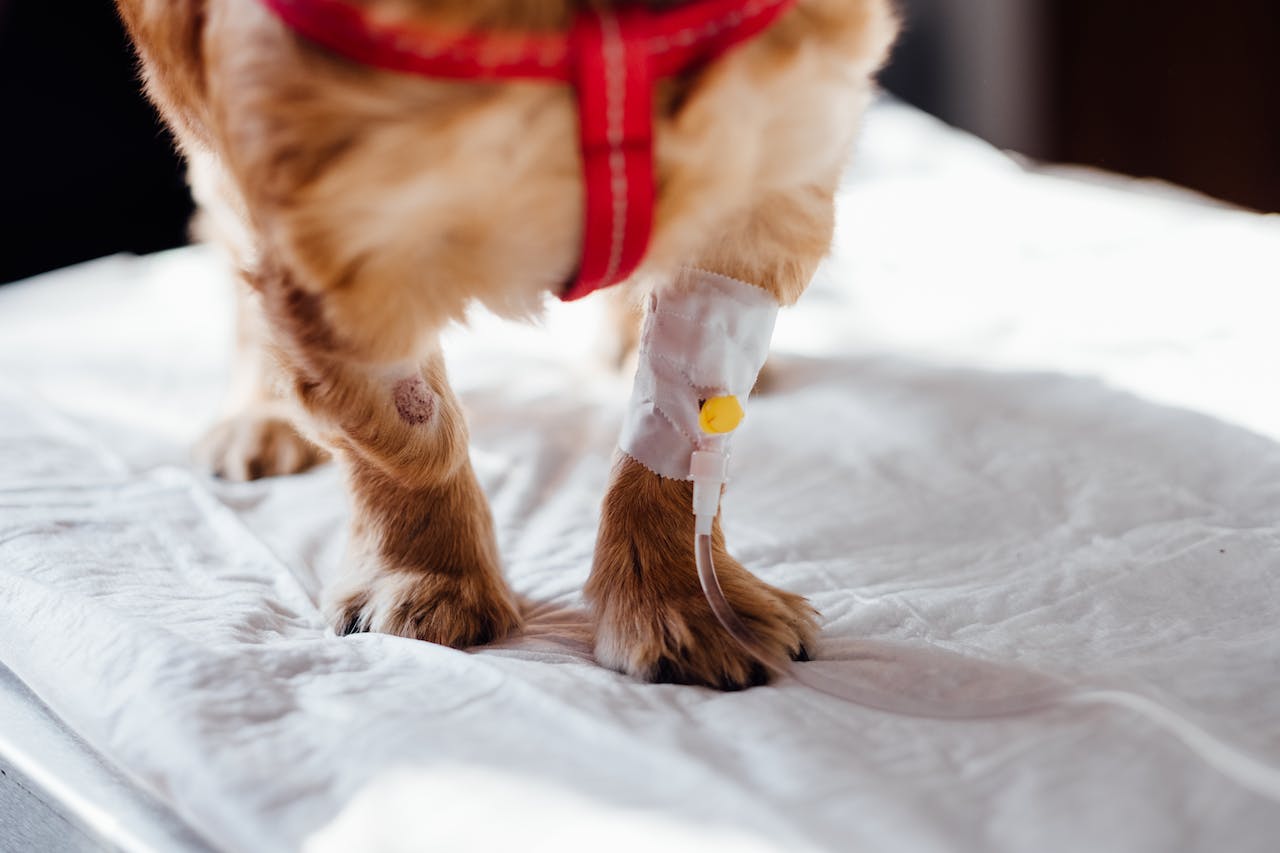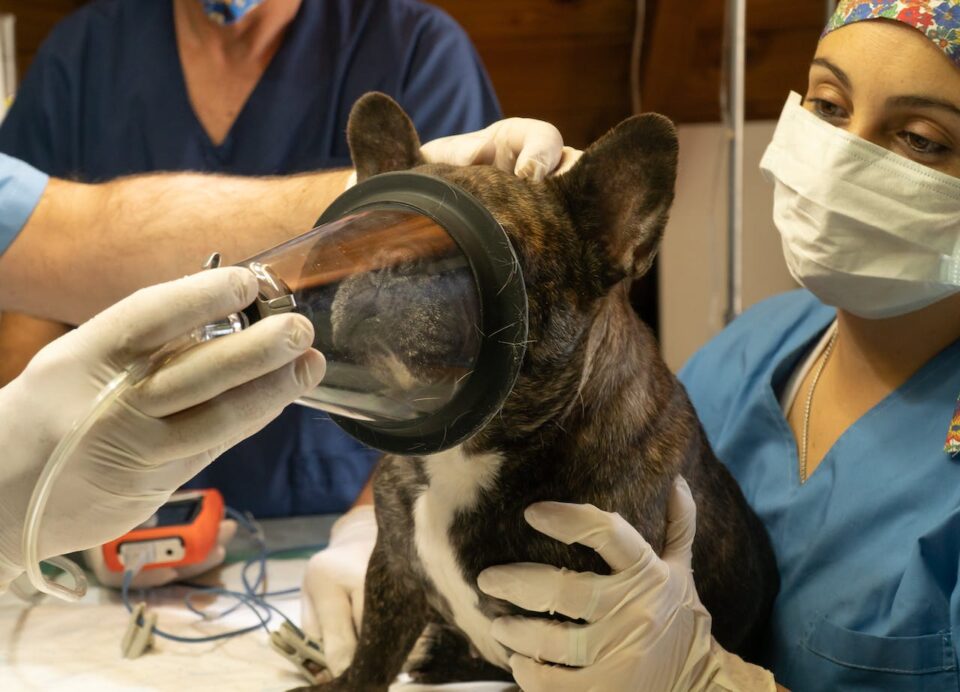
Dog Leg Injuries: Common Types and Steps for Recovery
You're on your usual walk with your dog, enjoying the fresh air, when suddenly, your furry friend yelps in pain and starts limping. A moment of play or a misstep has led to a leg injury, a situation many dog owners face.
Leg injuries in dogs can range from minor sprains to more serious fractures or ligament tears, each affecting their mobility and overall well-being. Knowing the common types of leg injuries and how to manage them effectively is crucial for a pet owner.
Leg injuries can significantly impact your dog's quality of life. Prompt and appropriate action is critical to ensuring a quick recovery. We will talk about the various types of leg injuries that dogs commonly experience. You'll learn about the steps you can take to aid in your dog's recovery, from initial care to physical rehabilitation.
Keep reading to gain valuable insights into managing dog leg injuries. This knowledge will empower you to provide the best care for your furry companion, promoting their swift and healthy recovery.
Types of Dog Leg Injuries
Dogs can suffer from a variety of leg injuries. Sprains and strains are common, especially in active dogs. Fractures and breaks can occur from falls or accidents. Ligament injuries, such as anterior cruciate ligament (ACL) tears, are also prevalent in dogs.
Joint dislocations and cuts or lacerations on the leg require immediate attention. Each type of injury requires a specific approach in terms of care and treatment.
Related: Natural Anti-Inflammatory for Dogs: Safe and Effective Remedies
Recognizing Symptoms of Leg Injuries
Identifying a leg injury early can significantly impact the recovery process. Common signs include limping or reluctance to walk, visible swelling or deformity, and whining or signs of pain.
Dogs may also lick or bite at the injury site, indicating discomfort. A sudden change in activity levels can also be a tell-tale sign of a leg injury.
First Aid for Dog Leg Injuries
First aid is crucial in managing a dog's leg injury. Immobilization of the affected leg can prevent further damage, and applying cold packs can help reduce swelling. It's essential to prevent the dog from licking or biting the injury to avoid infection. Ensure safe transportation to a veterinarian and manage pain until professional help is available.
If you are looking for a plant-based holistic approach to first aid for dogs, try First Aid Ointment from Gou Gou Pets!
Veterinary Diagnosis and Treatment

A professional veterinary assessment, often including diagnostic imaging like X-rays, is essential for determining the appropriate treatment. Depending on the injury's severity, options may include surgical or non-surgical treatments.
Pain relief and anti-inflammatory medications are often prescribed. Following the veterinarian's advice for post-operative care is crucial for a full recovery.
Related: Natural Remedies for Dog Arthritis: Easing Canine Joint Discomfort
Home Care and Management
Post-treatment, creating a comfortable recovery area for your dog is vital. Manage medication schedules diligently and assist them with mobility and bathroom breaks as needed. Monitor the injury for signs of infection or complications and keep the environment calm and stress-free to aid in healing.
Physical Rehabilitation Techniques
Recovering from a leg injury often requires professional physiotherapy, which can include a range of targeted exercises and stretches tailored to your dog's specific injury. Hydrotherapy is another beneficial option, especially for dogs needing low-impact exercise.
Supportive devices like slings or braces can assist dogs with mobility and provide stability during healing. Regularly monitoring progress and adapting exercises as your dog improves are crucial steps in the rehabilitation journey.
Related: How to Treat an Open Wound on a Dog: First Aid Tips
Nutrition for Healing and Recovery
A balanced diet plays a critical role in your dog's recovery from a leg injury. Nutritional supplements, particularly those aimed at bone and joint health, can be beneficial.
Adjusting calorie intake is important for dogs that are less active due to their injury to avoid unnecessary weight gain. Hydration remains a key aspect of recovery, and certain foods that might hinder the healing process should be avoided.
Preventing Future Injuries
Preventing future leg injuries is vital. Regular exercise and proper weight management can greatly reduce the risk of injuries. Safe play practices and a secure environment can prevent accidents.
Incorporating joint supplements can help in maintaining long-term joint health. Regular veterinary check-ups are essential for early detection of any health issues that could lead to injuries.
Emotional Support and Bonding
The emotional impact of injuries on dogs is significant. Providing comfort and reassurance to your injured dog is essential for their mental well-being.
Keeping them engaged with gentle activities and maintaining a routine can help in maintaining a sense of normalcy. Bonding activities that are safe and appropriate for their recovery stage can strengthen your connection during this challenging time.
When to Seek Further Veterinary Care
If your dog shows persistent symptoms or a worsening condition, it’s important to consult your veterinarian. Signs of pain, discomfort despite treatment, or complications like infection warrant further veterinary care. Behavioral changes can indicate stress or depression, and regular veterinary follow-ups are important to ensure your dog’s recovery is on track.
Need a way to keep your dog comfortable while they are recovering from their leg injury? Apply 3-in-1 Paw Ointment on their injury to get them back to normal in no time!
A Road to Recovery
It's clear that understanding the various types and the necessary steps for a speedy recovery is crucial. Each phase is critical in ensuring your dog's quick return to health and vitality, from the initial assessment and action to the detailed care during the rehabilitation process.
The comprehensive care required for these injuries underscores the importance of a multi-faceted approach, encompassing everything from physical therapy to nutritional support.
As a pet owner, your role in the recovery process is an incredibly important one. Your involvement, care, and attention play a pivotal role in not just the physical healing of your dog but also in their emotional well-being.
Regular monitoring, adapting care routines as needed, and providing emotional support are all critical aspects of the recovery journey.
This experience serves as a reminder of the importance of continuous education and proactive care in pet ownership. Staying informed about pet health, understanding potential risks, and being prepared for emergencies are all part of responsible pet ownership.
Share
